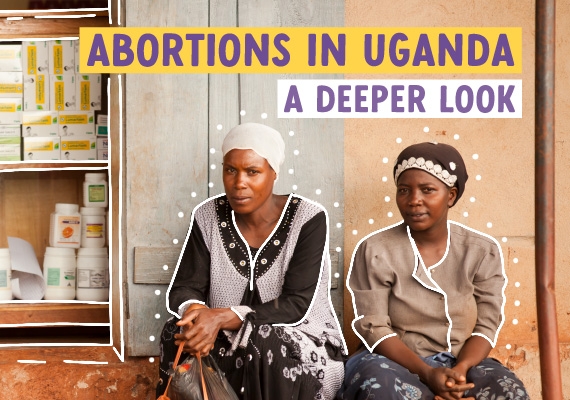Public Health Crisis Due to Abortion Care
Abortion has for long been an integral part of our communities regardless of the setting – whether urban, suburban and rural. Yet it’s something we talk about under tables, behind closed doors, in ‘painted’ whispers. But, in the end, the truth is that unsafe abortions claim more lives in many ways than we choose to believe.
In Uganda, abortion is poorly understood at all levels. Starting from the policy makers, law enforcers, key leaders, cultural and religious leaders, community leaders, health workers down to the wanaichi. This has been due to a clear gap in information when it comes to abortion. Many believe abortion is illegal in Uganda but is it? If so, why is that?
The laws on abortion in Uganda are ambiguous making them hard to interpret at all levels. For instance, the constitution states in article 33 that “Women shall be accorded full and equal dignity of the person with men; the state shall provide the facilities and opportunities necessary to enhance the welfare of women to enable them realize their full potential and advancement…”
The same constitution in article 22(b) states “No person has the right to terminate the life of an unborn child except as may be authorized by the law”. This alone is contradictory hitherto given that a great percentage of pregnancies in Uganda are unintended as per the article published in New Vision 2013 which showed that more than 4 in 10 pregnancies conceived are not intended. Surely this number must have doubled, if not tripled, ever since the outbreak of Covid-19 and the extreme measures taken by the government to curb the spread through instituting a mandatory lockdown. We clearly witnessed a rise in gender based violence resulting in teenage pregnancies but these young girls and women at large cannot access safe abortion care because the constitution takes away their right to bodily autonomy. This in turn forces them to carry these pregnancies.
The same constitution in article 224 states “A person is not criminally responsible for performing in good faith and with reasonable care and skill a surgical operation upon a person for his or her benefit, or upon an unborn child for preservation of the mother’s life” this section empowers the service provider to provide safe abortion care in the interest to save the mother’s life. Refusal to provide the service to this young girl only pushes her to try the crude methods of termination for instance; many girls use sharp objects like bicycle spokes, unfolded hangers, knives, sticks and a variety of herbs, myths on abortion are quite scary as the results are always terrible; over bleeding, perforations of the uterus, bladder even the rectum, infections and the emotional trauma that is if they’re lucky enough to survive.
Unsafe abortions not only occur in the bushes or traditional healers’ place but also they occur in hospitals at the hands of unskilled health workers this is so because health workers we are not trained on how to extend safe abortion care to clients we are only trained on how to provide post abortion care, so what happens if a friend or a relative or a girlfriend desires to terminate a pregnancy chances are high that either a wrong drug will be prescribed, wrong dose, wrong route of administration or duration with resultant complications. Not all health workers know the right dosage of misoprostol for abortion care or where to access it and this has been hazardous the lives of females ‘access’ and the abnormal prices slapped on the pills or the procedure.
In Uganda the cost of a misoprostol or misoprostol/mifepristone combination goes for as high as 80,000ugshs, cost of getting an MVA done goes as high as 700,000ugshs and this majority of these females can’t afford turning onto the cheaper available local methods of terminating a pregnancy of unsafe abortion.
The Uganda Demographic Health Survey 2016 states that the maternal mortality ratio is still high at 336 per 100,000 live births, and the maternal deaths are estimated at 16-18 per day with 4-6 deaths attributed to unsafe abortion. Unsafe abortion continues to be a leading cause of maternal death. A 2013 report by Guttmacher institute showed that 297,000 abortions occur annually – about 8 abortions occur every hour that passes by in Uganda. Given our restrictive legal system, women seek unsafe methods of abortion care resulting in the fore mentioned atrocities. Abortion has for long been tagged a wrong doing by many religious and cultural sects, drawing a thick line between abortion and their values. This has caused a barrier in proper health seeking for many girls who fear being judged, convicted or forever ejected from the community. Many health workers impose their moral and religious values onto their patients, but the more we make it hard for young girls to get safe and proper comprehensive safe abortion care or post abortion care, the more we send them into the hands of unskilled providers.
In Uganda the unmet need for family planning is less than 40%. What does that say about the remaining 60%? They have no access to proper modern family planning methods and thus the rise in unwanted pregnancies with imminent unsafe abortions coming into the picture.
If your house is on fire and you try to extinguish the fire with water or a standby fire extinguisher but it stays burning, do you leave it to burn or you call 911 to stop the fire? The answer to this should be the same as to one conceiving even after using a contraceptive method, because she never wanted the pregnancy in the first place therefore, she should have all rights to access safe abortion care.
Author’s bio – Pre Intern Doctor from Gulu University, Executive Director of Her Smile Uganda
